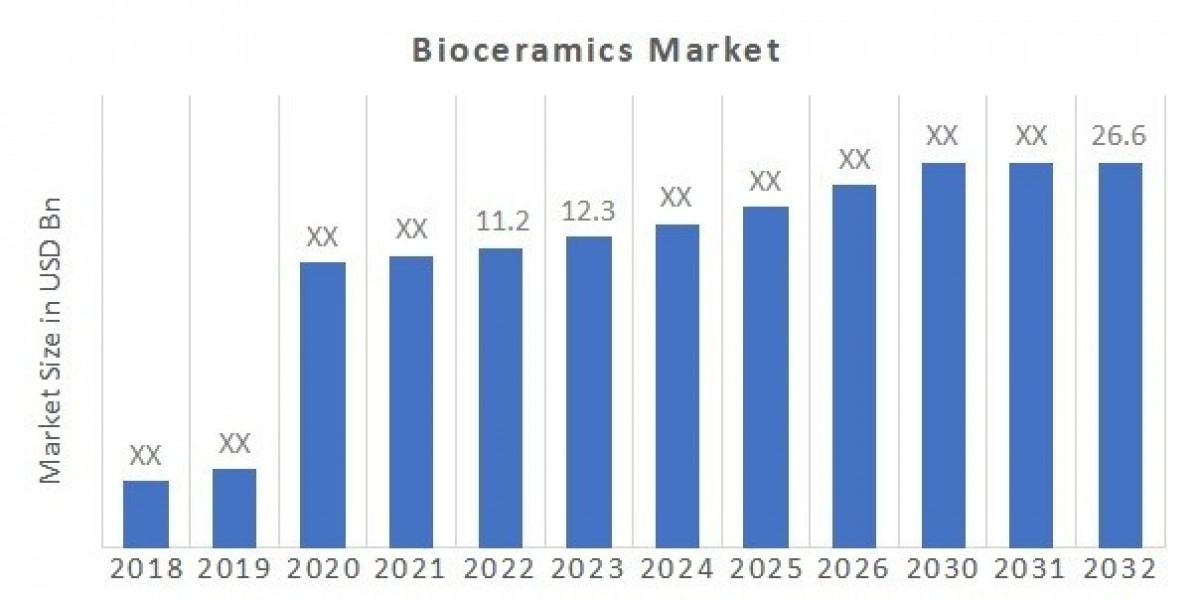The field of bioceramics has witnessed tremendous growth over the past decade, revolutionizing medical and dental industries by providing innovative and versatile materials. Bioceramics are biomaterials composed of ceramic compounds that exhibit remarkable biocompatibility and have been specially designed to interact with biological systems. Their diverse range of properties, including mechanical strength, bioactivity, and biodegradability, makes them ideal for numerous medical applications. In this blog, we will delve into the exciting world of Bioceramics Market, exploring its market trends, technological advancements, and the potential impact it has on human health.
The Bioceramics Market is projected to reach $24.92 billion by 2030, growing at a CAGR of 10.10% from 2021 to 2030
The Expanding Bioceramics Market:
The bioceramics market has been experiencing substantial growth due to the increasing demand for advanced medical devices and therapies worldwide. The market's expansion can be attributed to the rising geriatric population, growing awareness about healthcare, and the constant need for improved treatments. Furthermore, the escalating prevalence of chronic diseases and orthopedic disorders has significantly boosted the adoption of bioceramics, as these materials can be tailored to meet specific medical requirements.
Applications in Medical and Dental Industries:
Bioceramics have found extensive applications in various medical fields, notably in orthopedics, dental care, and tissue engineering. In orthopedics, bioinert ceramics like alumina and zirconia are widely used for joint replacements and bone repair due to their excellent mechanical properties and biocompatibility. Bioactive ceramics, such as hydroxyapatite and bioactive glass, have been extensively employed in dental implants and bone grafting procedures, promoting bone regeneration and integration.
Tissue engineering is another promising area where bioceramics play a crucial role. They serve as scaffolds for tissue regeneration, helping to repair damaged tissues and organs. Bioceramic scaffolds support cell adhesion, proliferation, and differentiation, ultimately leading to the development of functional tissue constructs for transplantation.
Technological Advancements and Innovations:
The bioceramics market is constantly evolving, driven by continuous research and development efforts to enhance material properties and expand their applications. Researchers are actively exploring new ceramic compositions and fabrication techniques to tailor bioceramics with specific functionalities. One notable advancement is the introduction of nanotechnology in bioceramics, where nanoscale modifications can significantly influence the material's bioactivity and mechanical properties.
Additionally, 3D printing has revolutionized the bioceramics industry by allowing the fabrication of patient-specific implants and scaffolds. This personalized approach leads to improved treatment outcomes and quicker patient recovery. The combination of 3D printing and bioceramics has also paved the way for biofabrication, where entire organs and tissues can be engineered using these biomaterials.
Challenges and Future Prospects:
While bioceramics have shown immense potential, there are still challenges to address. One significant concern is the brittleness of certain ceramics, which may limit their use in high-load-bearing applications. Researchers are actively exploring composite materials and ceramic coatings to overcome this limitation.
Moreover, the regulatory landscape poses a challenge for the bioceramics market, with stringent approval processes for medical devices and therapies. Addressing these challenges will be crucial for unlocking the full potential of bioceramics in healthcare.
Conclusion:
The bioceramics market has emerged as a vital segment within the medical and dental industries, offering innovative solutions for various healthcare applications. From joint replacements to tissue engineering, bioceramics continue to shape the future of medical treatments. Technological advancements, such as nanotechnology and 3D printing, are propelling the field forward, while ongoing research promises further breakthroughs.
As the bioceramics market continues to expand, its potential to improve patient outcomes and enhance human health is immense. With a combination of innovation, collaboration, and regulatory support, bioceramics are poised to drive transformative changes in medical science, making it a key player in the pursuit of a healthier and more sustainable future.
About Market Research Future:
Market Research Future (MRFR) is a global market research company that takes pride in its services, offering a complete and accurate analysis about diverse markets and consumers worldwide. Market Research Future has the distinguished objective of providing the optimal quality research and granular research to clients. Our market research studies by products, services, technologies, applications, end users, and market players for global, regional, and country level market segments, enable our clients to see more, know more, and do more, which help answer your most important questions.
Contact:
Market Research Future (Part of Wantstats Research and Media Private Limited)
99 Hudson Street, 5Th Floor
New York, NY 10013
United States of America
+1 628 258 0071 (US)
+44 2035 002 764 (UK)
Email: [email protected]
Website: https://www.marketresearchfuture.com







